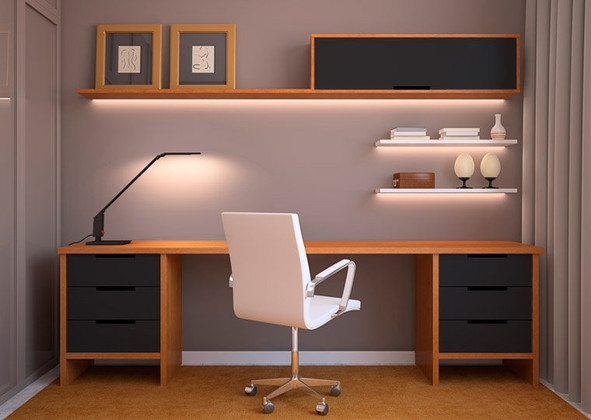Task Lighting: Getting it Done with Layered Lighting
Aug 5th 2020
There’s nothing worse than cooking a whole meal by the light of a single overhead bulb, trying to play a board game by the light of a dim lamp in a far-off corner, or reading by the light of a ceiling fan casting the shadow of your own hand across the page. All these activities would be better served by the addition of task lighting to the scenario. Suddenly you’re cooking a meal illuminated by under-cabinet LEDs, playing a game by the light of a beautiful pendant light, or reading a book next to a carefully positioned lamp.
So what is task lighting? Simply put, it provides increased light for specific tasks in a room that may already have some ambient light. Task lighting is especially useful for seeing small objects or objects of low contrast. Task lighting can also provide increased light for tasks that require accuracy, such as reading directions on a bottle of medicine or chopping vegetables in the kitchen. Task lighting is also useful for workspaces, such as a workbench or woodshop in the garage, or a space used for arts and crafts.
Admittedly task lighting feels like something that could just take care of itself. If you find yourself trying to do something in a part of your home or office or store that is difficult to do because there’s inadequate light, put more light there and solve the problem. And that may work most of the time. But there’s a subtle art to truly great task lighting. Just adding light to an industrial kitchen, flooding every surface with bright white light is probably going to work just fine. Doing the same in a reading nook will destroy everything that makes a reading nook appealing.
There are many ways to approach using task lighting effectively. Desk lamps provide adjustable task lighting that can be aimed in a specific direction, for demanding visual tasks such as reading and writing. Plug-in table and floor lamps are also commonly used to provide task lighting for reading.
Wall-mounted adjustable arm lamps, also known as swing-arm lamps, are often located in the bedroom, near the bedside, and are commonly used as task lighting for reading in the evening. These fixtures can be positioned to direct light onto reading material and avoid glare. Install the fixture above the headboard to minimize shadows. This type of fixture may be appropriate for a child's bedroom to avoid floor and table lamps, which can be tipped over.
Workshops and areas for hobbies and arts and crafts also benefit from bright, clean, specialized task lighting. SunLake’s easily installed and adjustable shop lights are perfect for these areas. LED bulbs use much less energy than traditional incandescents and come in a variety of color temperatures to help provide precisely the kind of task lighting you need for whatever activity you need to illuminate.
So far we’ve discussed ambient and decorative lighting. Task lighting adds another layer to your lighting scheme. Next we’ll discuss accent lighting and how to tie everything together.
Workshops, hobby, and arts and crafts areas
Desk, floor, and swing-arm lamps
Under-cabinet lighting


